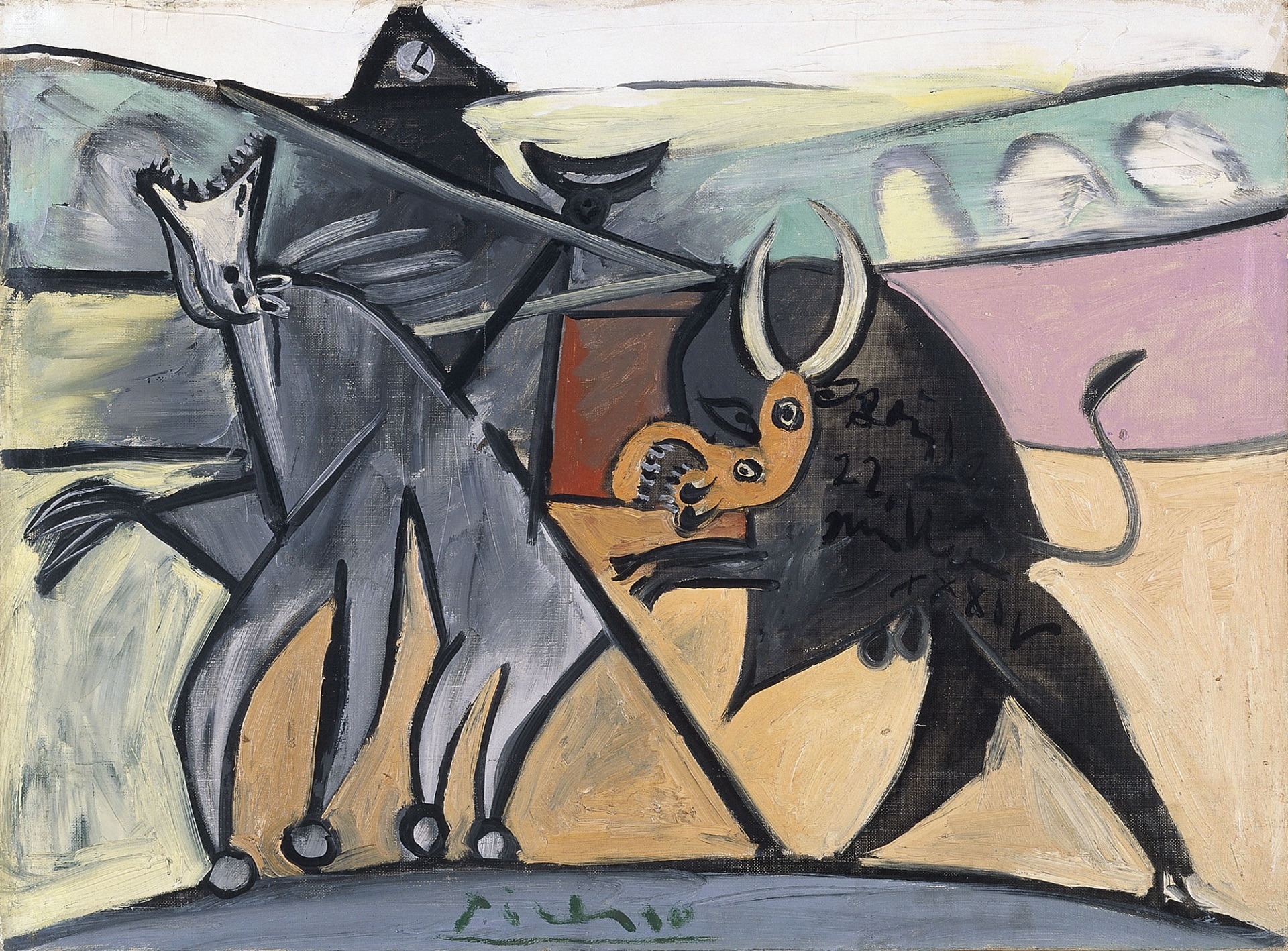art-Picasso.com
Pablo Picasso 1881-1973
©Pablo Picasso - 1934 Bullfight
 Bullfight |
From Museo Thyssen-Bornemisza, Madrid:
The close relationship between the world of bullfighting and Picasso’s oeuvre is unquestionable. From his childhood days in Málaga, where his father often took him to the bullring, he was greatly fascinated by the national sport. In addition to the artistic possibilities of the bullfight — a theme steeped in drama, which would prove very useful at certain conflictive times — Picasso regarded it as an expression of Spanishness: “The life of the Spanish consists of Mass in the morning, the bullfight in the afternoon, and the whorehouse at night. What element do they have in common? Sadness,” he came out with to André Malraux one day.
The bull, the artist’s alter ego, is laden with symbolism, although always infused with ambiguous meanings. It can be a metaphor for different types of human conduct — be it violence, eroticism or love — and can also be portrayed as a violent killer or poor victim. On other occasions Picasso identifies with Minotaur, the mythological brother of the bull. Born in Crete of the relationship between a woman and a bull, the figure of Minotaur is repeated in numerous drawings and prints produced between 1933 and 1935, almost always locked in a loving embrace with a female figure who is none other than Marie-Thérèse, then his mistress.